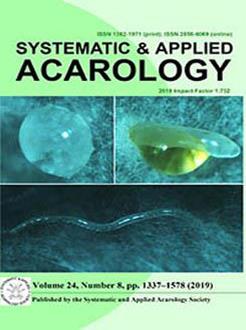DNA-barcodes reveal that European populations attributed to Hygrobates longipalpis (Hermann, 1804), thus far considered a common inhabitant of standing and slowly flowing running waters all over the Western Palaearctic, represent two distinct lineages, both widely distributed over the continent. They are differentiated also from an ecological point of view, with specimens from standing waters (“clade I”) separated from specimens collected in slowly running waters (“clade II”). Morphological examination revealed that, based on the length ratio of proximo- and distomedial setae on terminal segments of fourth legs, two morphospecies correspond to these two clades. As molecular examination of a specimen from the type locality of H. prosiliensKoenike, 1915 (Bremen, Heiligenrode) shows that it belongs to “clade I”, populations from standing waters are attributed to that species. In view of the sketchy original description, loss of holotype and insufficient locality data of H. longipalpis, we arbitrarily assign to it stream-dwelling populations of “clade II” and designate a neotype.
How to translate text using browser tools
23 August 2019
Re-established after hundred years: Definition of Hygrobates prosiliens Koenike, 1915, based on molecular and morphological evidence, and redescription of H. longipalpis (Hermann, 1804) (Acariformes, Hydrachnidia, Hygrobatidae)
Vladimir Pešić,
Łukasz Broda,
Miroslawa Dabert,
Reinhard Gerecke,
Peter Martin,
Harry Smit
ACCESS THE FULL ARTICLE

Systematic and Applied Acarology
Vol. 24 • No. 8
August 2019
Vol. 24 • No. 8
August 2019
DNA-barcoding
Europe
running waters
species delimitation
standing waters
Water mites




